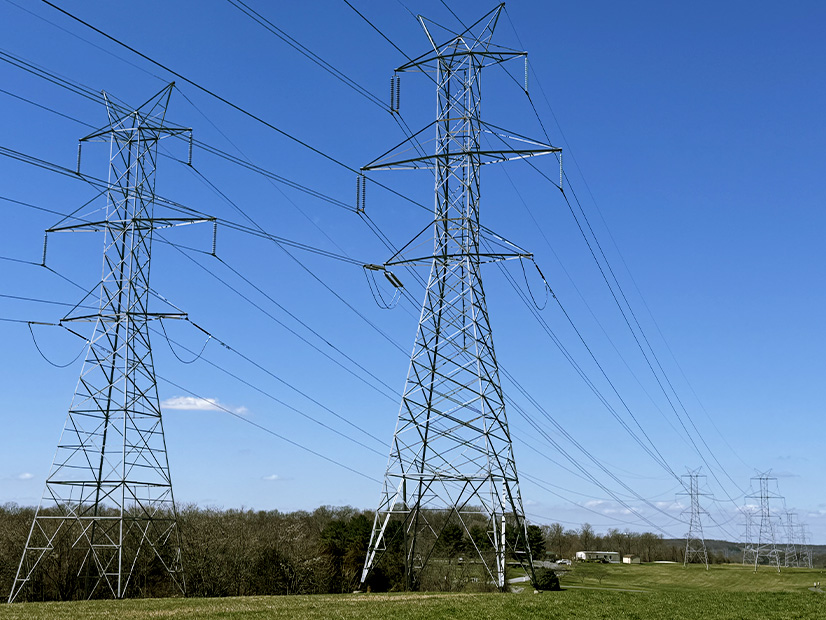Demand Curve Reset and Transmission Security
NYISO’s Market Monitoring Unit, Potomac Economics, presented its recommendations for addressing what it calls inefficient market outcomes caused by setting locational capacity requirements based on the transmission security limit (TSL).
The MMU told the Installed Capacity Working Group at its meeting Sept. 24 that the current rules overvalue surplus capacity, setting “inefficiently high prices” while also overcompensating resources that don’t help satisfy transmission security requirements.
“We focused in on the last couple of years here,” said Joe Coscia, a director at Potomac Economics. “It’s possible that the current LCR is quite a bit higher than it would otherwise be as a result of the TSL. … We expect that divergence to grow in the coming years with the entry of [the] Champlain Hudson [transmission project] and other resources like offshore wind as well.”
The Monitor first made the recommendations in its 2023 State of the Market report, after NYISO had changed how it calculates the TSL floor.
“Large resources and SCRs [special-case resources] are overcompensated when the LCR of their locality is set at its TSL floor,” it said in the report, released in May. “This is because the presence of these resources causes the TSL floor to increase, so they provide less net supply towards meeting capacity requirements than they are paid for in the capacity market.”
Thus, the MMU recommended paying resources for capacity based on the requirements they actually contribute to meeting. SCRs should be compensated at the price that would prevail in their locality absent the TSL floor, while large, intermittent and storage resources should be paid the full capacity price for the portion of their capacity that does not cause the TSL floor to increase and the capacity price that would prevail absent a TSL floor for the rest of their capacity.
Coscia said bulk electrical consumers would save roughly $380 million if the Monitor’s recommendations were implemented. The payments for reliability assurance and transmission security should be paid for and determined with separate curves, he said. Implementing sloped demand curves that reflect the marginal value of capacity for transmission security would avoid excessively high prices.
Multiple stakeholders representing the generation sector asked whether this suggestion would be compatible with the proposed peaker unit being a storage resource for the upcoming demand curve reset.
“I’m thinking through a lot of how you would set one, particularly with a two-hour battery, and I’m getting a lot of circular reference errors in my mind while thinking through it,” said Shawn Picard, vice president of engineering for TigerGenCo, which operates in the Bayonne Energy Center in New Jersey.
“The short answer for that is that you put in a different value for the CAF [capacity accreditation factor] [than] is used in the model, and you would get a different value if you assume that the battery, or any of the other technologies, would have a different CAF for [transmission security] than what it has for [resource adequacy],” Coscia answered. “I just don’t want to speculate on what that value might be.”
Others brought up that making a separate demand curve for transmission security would probably involve creating additional proxy units and make the whole system more complicated. Howard Fromer, director of regulatory affairs for TigerGenCo, asked how real the savings to consumers were that Potomac had calculated.
“Did you take into account the potential that what you’re ending up doing is creating this much more complicated system and simply shifting payment dollars from the market to subsidies?” Fromer asked. “How much of this $380 million is real versus just a shift, and we just end up having to pay a higher incentive to attract those resources?”
“I think our position is that it plays a useful role in sending signals accurately: What are the subsidy values that different resources require?” Coscia said. “It may have an effect on what policy-sponsored projects come in based on how much they can get from the market, or from other sources of payment.”
Final Demand Curve Reset Recommendations
Both NYISO and its consultants presented their final recommendations for the demand curve reset for a last look before stakeholders make oral arguments to the Board of Directors next month.
Some changes were made to assumptions in response to stakeholder feedback, including the following:
-
- Peak load window hours for the battery energy storage system (BESS) peaker unit were updated to reflect the seasonal periods for 2024-2025.
- Voltages assumptions for the BESS were revised downward for all zones outside Long Island.
- Operations and maintenance estimates were revised to include land lease payments for the construction period.
- Sales tax was added to O&M expenses.
- Costs associated with the mortgage reporting tax were added.
Fromer asked why the consultants had apparently ignored FERC precedent of discretionary programs not being available for offsets for potential developers. He said that when his company built the last peaker plant in New York City, it could not get an exemption.
Daniel Stuart, a manager at the Analysis Group, replied that they had tried to come up with a reasonable scenario to model that might fit a potential developer.
“We do think it’s reasonable and perhaps standard for new developers seeking to build batteries or gas turbines in New York,” Stuart said. “That is the logic we applied for the mortgage reporting tax.”
Fromer and other stakeholders brought up several other issues they felt had been left out, including investment tax credit eligibility, whether a battery system would need to be removed at the end of a land lease, government incentives and future cost reductions. Analysis Group members said that they had not ignored or dismissed these suggestions but that not all of them were convincing enough to warrant revisions.



